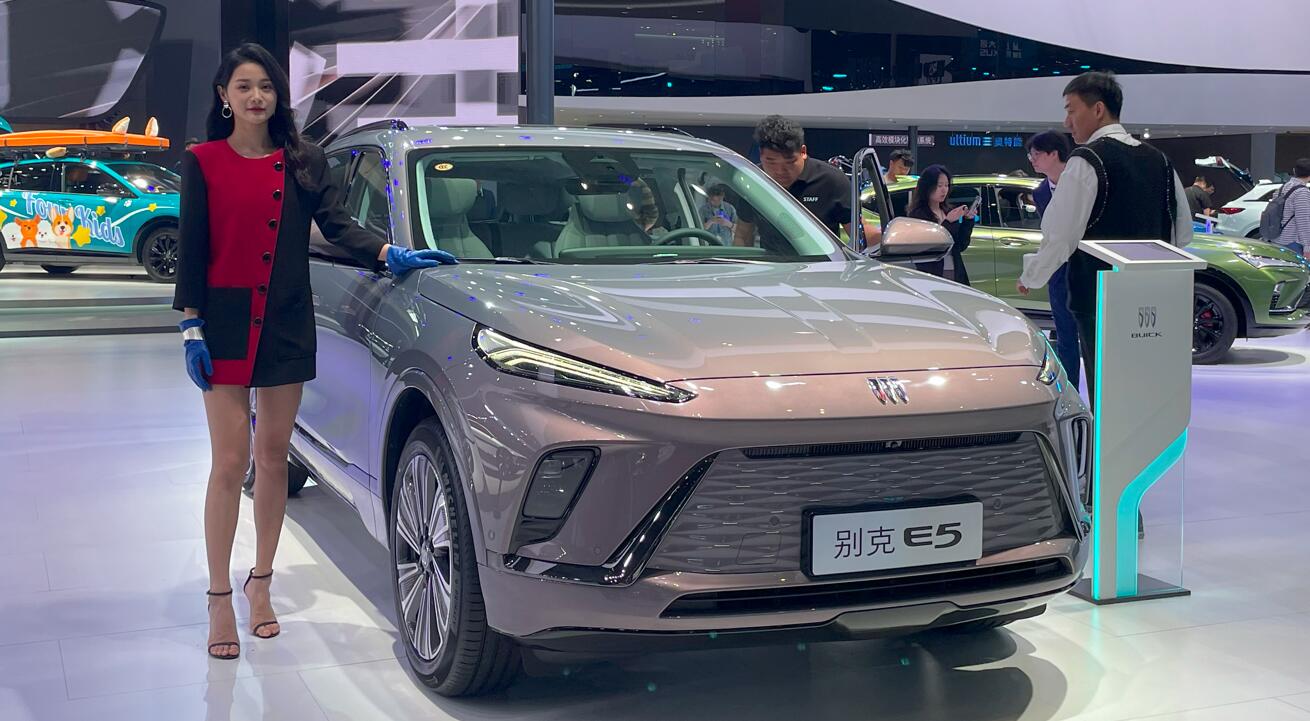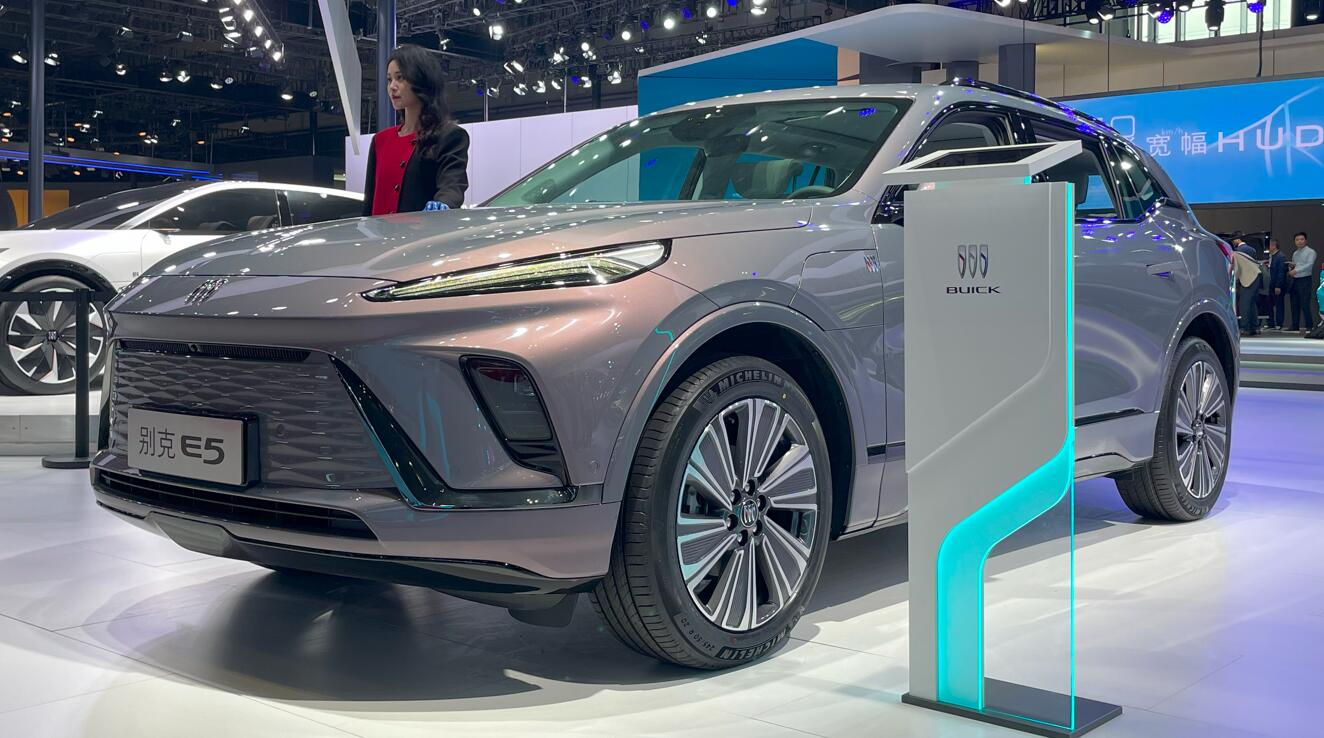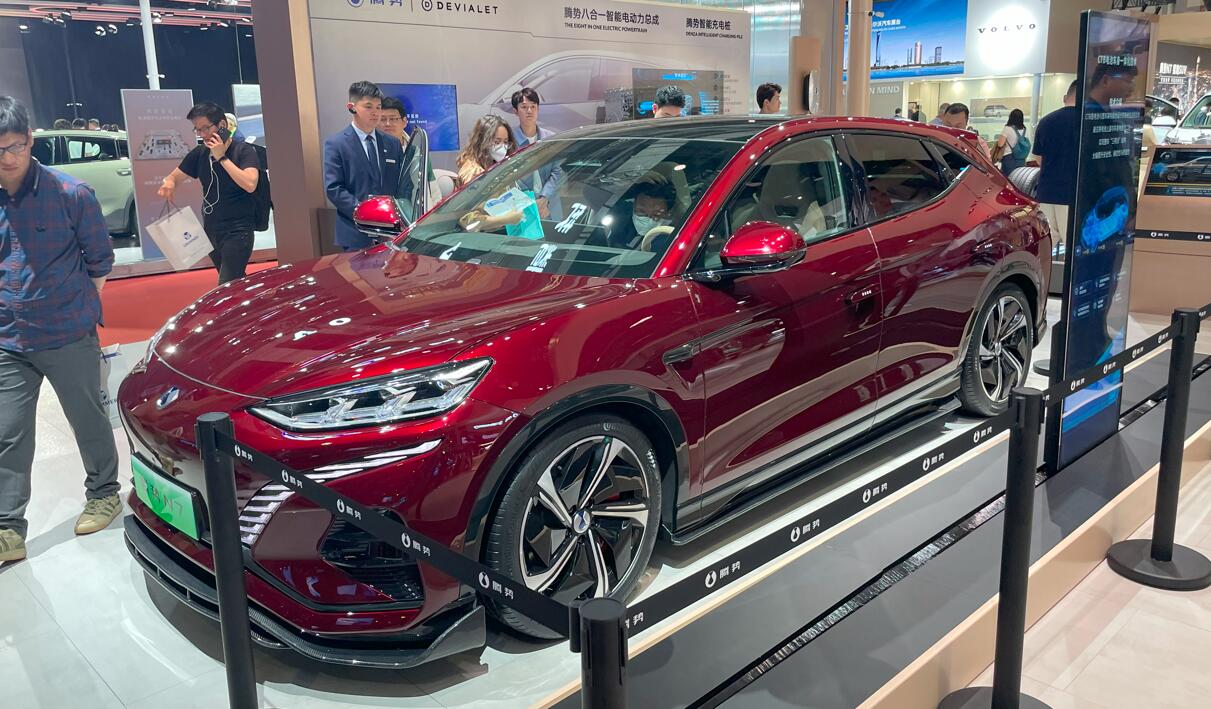The wait time for the NIO EC7 is now about 5 weeks, longer than the previous 4 weeks, and the ET7 is about 3 weeks, down from about 4 weeks. | NIO US | NIO HK | NIO SG

(Screenshot on April 28.)
The wait time for NIO's (NYSE: NIO) coupe SUV EC7 became slightly longer on the day deliveries began, while the wait time for its flagship sedan ET7 became shorter.
The expected delivery date for the NIO EC7 is now about 5 weeks, up from about 4 weeks previously, information from the NIO App monitored by CnEVPost shows.
The model was launched on NIO Day 2022, December 24, 2022, and the first deliveries began on April 28, slightly ahead of NIO's original plan of mid-May.
On April 21, the NIO App saw significant changes to the vehicle configurator, and the ET7 flagship sedan wait time started showing again, with the EC7 going from May to about 4 weeks.
NIO ET7 now has a wait time of about 3 weeks, compared to about 4 weeks previously.
NIO's website and app currently showcase seven models -- the new ES8, ES7, new ES6, EC7, EC6, ET7, and ET5.
In the vehicle configurator of the NIO App, there are 5 models available -- new ES8, ES7, EC7, ET7, ET5. The configurator of the new ES6 and EC6 based on the NT 1.0 platform is not available.
Wait time information for all other NIO models remains unchanged, with the new ES8 still showing deliveries expected to start in June, the ES7 waiting time is about 3 weeks, and the ET5 about 2 weeks.
On the first day of the Shanghai auto show on April 18, NIO launched the 2023 ET7 and unveiled the new ES6. The price of the new ET7 is the same as the previous version, while the price of the new ES6 was not announced.
NIO EC7 officially started delivery on April 28, earlier than the original plan of mid-May.
NIO did not announce the number of EC7s delivered in the first batch, but said the company held delivery ceremonies in cities including Hefei, Shenzhen, Guiyang, Wuhan, Hangzhou, Suzhou, Taizhou and Nanjing.
NIO begins deliveries of EC7 coupe SUV earlier than originally planned
Changes in wait times for NIO models
| Date | Model | Prev | Change | Latest |
|---|---|---|---|---|
| 04/28/23 | ET7 (NT 2.0) | About 4 weeks | ↓ | About 3 weeks |
| 04/28/23 | EC7 (NT 2.0) | About 4 weeks | ↑ | About 5 weeks |
| 04/25/23 | ES7 (NT 2.0) | 3-5 weeks | ↓ | About 3 weeks |
| 04/21/23 | ET7 (NT 2.0) | NA | NA | About 4 weeks |
| 04/21/23 | EC7 (NT 2.0) | Mid May | NA | About 4 weeks |
| 04/17/23 | ES7 (NT 2.0) | About 2 weeks | ↑ | 3-5 weeks |
| 04/14/23 | ES6 (NT 1.0) | About 2 weeks | NA | Stop showing |
| 04/10/23 | ET5 (NT 2.0) | About 3 weeks | ↓ | About 2 weeks |
| 04/10/23 | ES7 (NT 2.0) | About 3 weeks | ↓ | About 2 weeks |
| 03/28/23 | ET5 (NT 2.0) | 3-4 weeks | ↓ | About 3 weeks |
| 03/28/23 | ES7 (NT 2.0) | 4-6 weeks | ↓ | About 3 weeks |
| 03/14/23 | ET5 (NT 2.0) | 2-3 weeks | ↑ | 3-4 weeks |
| 03/14/23 | ES7 (NT 2.0) | About 3 weeks | ↑ | 4-6 weeks |
| 03/13/23 | ET7 (NT 2.0) | About 3 weeks | NA | Stop showing |
| 02/14/23 | ES7 (NT 2.0) | 3-4 weeks | ↓ | About 3 weeks |
| 02/14/23 | ET7 (NT 2.0) | 3-4 weeks | ↓ | About 3 weeks |
| 02/14/23 | ET5 (NT 2.0) | About 3 weeks | ↓ | 2-3 weeks |
| 02/6/23 | ET5 (NT 2.0) | 3-4 weeks | ↓ | About 3 weeks |
| 01/28/23 | ES7 (NT 2.0) | 2-3 weeks | ↑ | 3-4 weeks |
| 01/28/23 | ET7 (NT 2.0) | 2-3 weeks | ↑ | 3-4 weeks |
| 01/28/23 | ET5 (NT 2.0) | 7-9 weeks | ↓ | 3-4 weeks |
| 01/11/23 | ET5 (NT 2.0) | 8-10 weeks | ↓ | 7-9 weeks |
| 01/5/23 | ET5 (NT 2.0) | 9-11 weeks | ↓ | 8-10 weeks |
| 12/29/22 | ET5 (NT 2.0) | 10-12 weeks | ↓ | 9-11 weeks |
| 12/22/22 | ET5 (NT 2.0) | 12-14 weeks | ↓ | 10-12 weeks |
| 12/20/22 | ES7 (NT 2.0) | 4-6 weeks | ↓ | 2-3 weeks |
| 12/13/22 | ET5 (NT 2.0) | 13-15 weeks | ↓ | 12-14 weeks |
| 12/13/22 | ET7 (NT 2.0) | About 2 weeks | ↑ | 2-3 weeks |
| 12/13/22 | EC6 (NT 1.0) | About 2 weeks | NA | Stop showing |
| 12/2/22 | ET5 (NT 2.0) | 21-23 weeks | ↓ | 13-15 weeks |
| 11/25/22 | ES7 (NT 2.0) | 7-9 weeks | ↓ | 4-6 weeks |
| 11/25/22 | ET7 (NT 2.0) | 3-5 weeks | ↓ | About 2 weeks |
| 11/23/22 | ES8 (NT 1.0) | About 2 weeks | NA | Stop showing |
| 11/16/22 | ET7 (NT 2.0) | 4-6 weeks | ↓ | 3-5 weeks |
| 11/10/22 | ES8 (NT 1.0) | 2-3 weeks | ↓ | About 2 weeks |
| 11/10/22 | ES6 (NT 1.0) | 2-3 weeks | ↓ | About 2 weeks |
| 11/10/22 | EC6 (NT 1.0) | 2-3 weeks | ↓ | About 2 weeks |
| 11/3/22 | ES7 (NT 2.0) | 11-13 weeks | ↓ | 7-9 weeks |
| 11/3/22 | ET7 (NT 2.0) | 6-8 weeks | ↓ | 4-6 weeks |
| 11/3/22 | ES8 (NT 1.0) | 2-4 weeks | ↓ | 2-3 weeks |
| 11/3/22 | ES6 (NT 1.0) | 2-4 weeks | ↓ | 2-3 weeks |
| 11/3/22 | EC6 (NT 1.0) | 2-4 weeks | ↓ | 2-3 weeks |
| 10/31/22 | ES7 (NT 2.0) | 12-14 weeks | ↓ | 11-13 weeks |
| 10/31/22 | ES8 (NT 1.0) | 3-5 weeks | ↓ | 2-4 weeks |
| 10/31/22 | ES6 (NT 1.0) | 3-5 weeks | ↓ | 2-4 weeks |
| 10/31/22 | EC6 (NT 1.0) | 3-5 weeks | ↓ | 2-4 weeks |
| 10/21/22 | ES7 (NT 2.0) | 13-15 weeks | ↓ | 12-14 weeks |
| 10/21/22 | ET7 (NT 2.0) | 11-13 weeks | ↓ | 6-8 weeks |
| 10/21/22 | ET5 (NT 2.0) | 21-23 weeks | NA | Stop showing |
| 10/21/22 | ES8 (NT 1.0) | 4-6 weeks | ↓ | 3-5 weeks |
| 10/21/22 | ES6 (NT 1.0) | 4-6 weeks | ↓ | 3-5 weeks |
| 10/21/22 | EC6 (NT 1.0) | 4-6 weeks | ↓ | 3-5 weeks |
The post NIO EC7 wait time becomes longer, ET7 shorter appeared first on CnEVPost.
For more articles, please visit CnEVPost.















